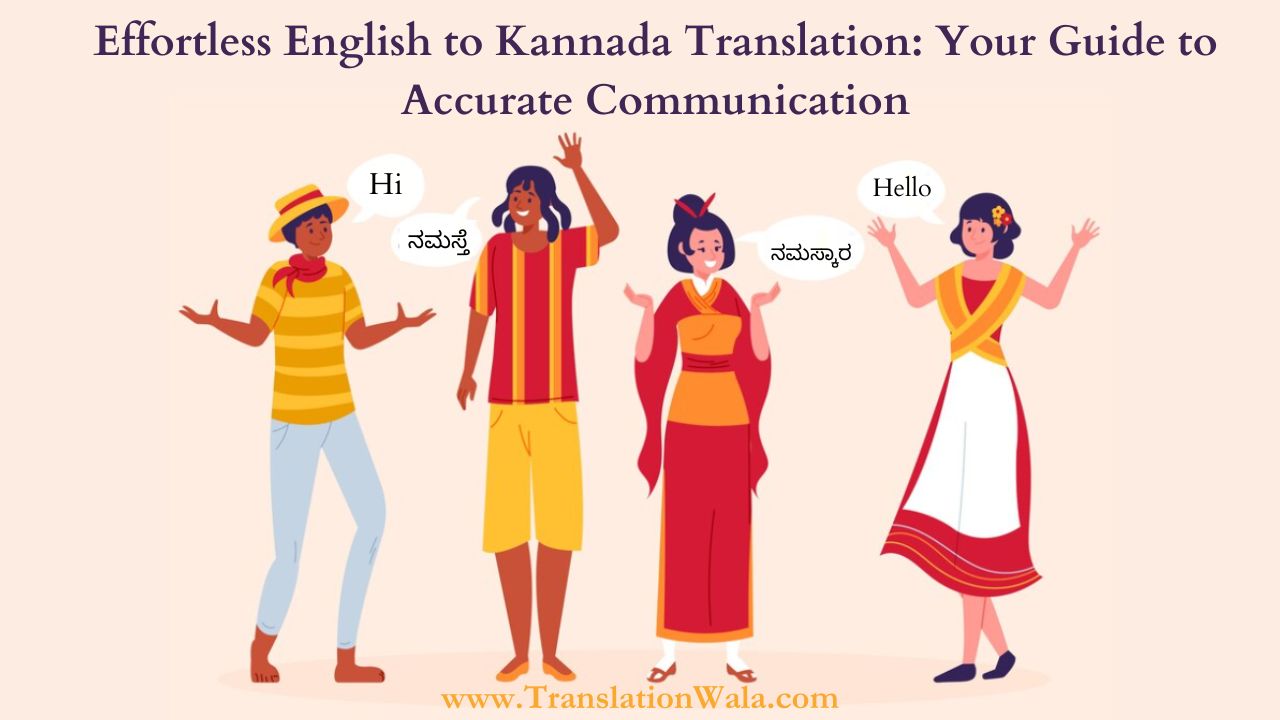It doesn’t have to be hard to build a bridge between English and Kannada. If you’re a businessperson trying to find your way around Karnataka’s busy markets, a tourist wanting to learn more about the culture, or just someone whose loved ones speak Kannada, you need accurate and easy translation to talk to them without any problems. With the information and tools in this guide, you’ll be ready to take on the world of English to Kannada translation with confidence.
Understanding the Nuances:
Kannada is a Dravidian language that more than 60 million people speak. It has a long past and a unique set of words. Unlike English, which is an Indo-European language, it has its own grammar, sentence structures, and a huge number of phrases and cultural references. To avoid exact versions that change meaning or sound bad, it’s important to be aware of these differences.
Also Read: English to Bengali Translation: A Step Towards Cultural Understanding
Tools at Your Fingertips:
Technology has changed the way translations are done. Online dictionaries, thesauruses, and grammar guides are quick ways to look up words and learn how to put them together in sentences. Machine translation tools, such as Google Translate, offer fast translations that aren’t always perfect. But depending on technology alone can lead to mistakes.
Mastering the Art:
A personal touch is often needed for conversation to really work. Professional translation services with native Kannada speakers on staff make sure that the work is accurate, sensitive to cultural differences, and follows industry or technical terms. Professional services promise perfect results whether you need legal papers translated, business presentations changed, or you just want to write a sweet letter to your grandma who speaks Kannada.
Beyond Words:
Language is more than just a bunch of words put together. Emotions, situations, and social norms are weaved into this culture fabric. A good translator knows these details and makes sure that the meaning and emotional impact of the original message are kept in the translation. This is especially important when negotiating business deals, writing artistic pieces, or making marketing materials.
Also Read: Navigating the Nuances of Gujarati Language: Expertise Matters in English to Gujarati Translation
Empowering Yourself:
You can improve your English to Kannada translation skills even if you don’t have professional help. Immersing yourself in the language through movies, music, and books can help you learn new words and see how they are used in real life. You can practice real-life speech and learn popular words by having talks with native speakers, either online or in person. Going to workshops or taking online classes can also help you learn more about translation skills and the subtleties of Kannada culture.
Remember:
- Accuracy is paramount: Make sure your versions accurately express the message you want them to without any confusion or misunderstanding.
- Context matters: Think about what you want to achieve and who you are writing for before you choose the words you use.
- Embrace the cultural bridge: Being sensitive to cultural differences helps people bond and understand each other better.
- Never stop learning: Keep improving your skills by using tools, practicing, and getting help from professionals.
Mastering words and structure isn’t the only thing that goes into effortless English to Kannada translation. Building bridges of information and linking things together is also part of it. When you learn Kannada, you can easily move through the language world and open up a lot of fun possibilities. It’s enough to have the right tools, know-how, and commitment.
